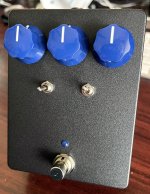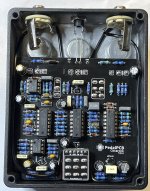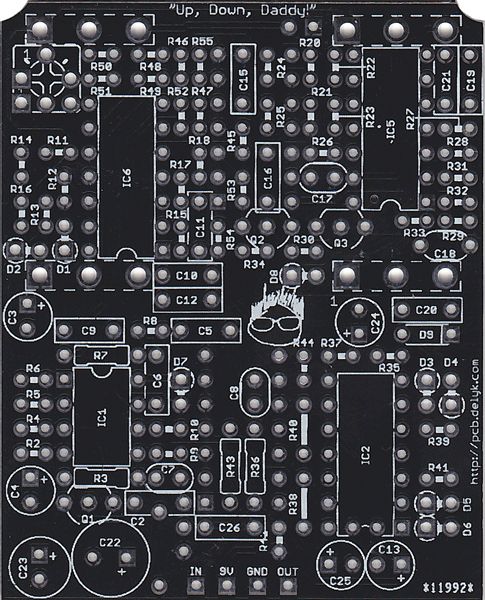MichaelW
Well-known member
- Build Rating
- 5.00 star(s)
3rd build report for today. I didn't get a chance to do a demo for this one. Maybe I'll add one later.
I've never played with an octave pedal before, and I wasn't really planning on building one until @harmaes talked me into building this one
(I may have mentioned before how easily influenced I am)
This thing is pretty cool. Tracks very well and works in all positions on the neck. According to the manual it's supposed to work better on neck pickups but I'm finding that it works pretty well with any pickup position.
Also interesting is how the original uses Ge diodes to create the octave sounds but this build called for Bat46's. I wonder how it would sound with Ge's?
Lots of cool sounds in this pedal and the sub octave is really the star here. It can sound HUGE. And you can dial in as much or as subtle of an effect as you please.
I'm still toying with it and seeing how to use it and how I would use it in the context of a song.
I was inspired by @DGWVI 's awesome graphic style and aspired to copy him.
Super smooth build. I used MMBF5457's soldered to the board and everything else is stock according to the BOM.
(The BOM calls for BAT41's although the board silkscreen called for BAT46's. I followed the board.


I've never played with an octave pedal before, and I wasn't really planning on building one until @harmaes talked me into building this one
(I may have mentioned before how easily influenced I am)
This thing is pretty cool. Tracks very well and works in all positions on the neck. According to the manual it's supposed to work better on neck pickups but I'm finding that it works pretty well with any pickup position.
Also interesting is how the original uses Ge diodes to create the octave sounds but this build called for Bat46's. I wonder how it would sound with Ge's?
Lots of cool sounds in this pedal and the sub octave is really the star here. It can sound HUGE. And you can dial in as much or as subtle of an effect as you please.
I'm still toying with it and seeing how to use it and how I would use it in the context of a song.
I was inspired by @DGWVI 's awesome graphic style and aspired to copy him.
Super smooth build. I used MMBF5457's soldered to the board and everything else is stock according to the BOM.
(The BOM calls for BAT41's although the board silkscreen called for BAT46's. I followed the board.




